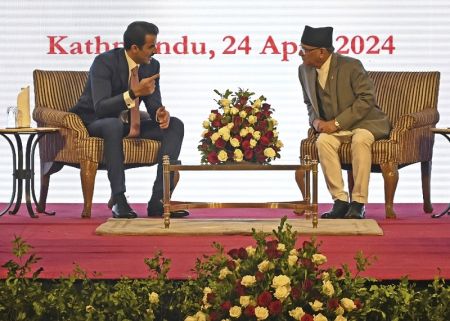November 17: The general public has been found to be confused about what a book building system is in the stock market. Last July, the Securities Board of Nepal (SEBON), the regulatory body of the Nepali stock market, had sought opinions and suggestions on the draft of its book building directive.
Some investors had also commented on social media that the Initial Public Offering (IPO) will no longer be available at Rs 100. The truth is that the intention of adopting the book building process in IPO is to issue them at a premium price. Book building process, in a way, is similar to an auction.
In this system, auction is done for a limited number of securities out of the total securities that the company wants to issue publicly. And, the price is determined by issuing the remaining securities on the basis of the prescribed premium. Let’s suppose that a company is about to issue 1 million shares in an IPO.
The company may auction 200,000 units through the book-building process. It looks at the highest price at which all 200,000 units can be sold and then the IPO is issued at the determined price. The auction process adopted in the book building process is called 'Dutch auction'.
In a normal auction, the price the buyer is willing to pay and the price he pays should match for the sale to occur. In Dutch auction, some buyers pay less than they were willing to pay. This is true only for those who participate in the auction. The price paid by the general public is the same.
Which companies is the book building system only applied to?
According to the directive published by SEBON, the company must have been operating at a profit for three consecutive years in order to issue their IPO through the book building process.
In addition, the issuance of the IPO should be approved by the general meeting and the net worth per share should be at least 50 percent of the paid-up capital. The rating of the company should also be average or above average. Only by fulfilling all these criteria will the company be able to issue an IPO from the book building system.
Not all companies can meet such criteria. A company that fails to meet these criteria will have to issue their IPOs at Rs 100.
After the price determination of the IPO, there is a provision that allows to sell 40 percent of the total shares to institutional investors and 60 percent to the general investors.
Institutional investors who purchase shares in this way will not be allowed to buy or sell shares of the company for six months after the issuance of IPO.
Only institutional investors, listed associations, collective investment funds, merchant bankers and recognized retirement funds approved by the Securities and Exchange Board will be eligible to participate in the auction under this method.
The book-building system is expected to encourage high-profit companies such as Surya Nepal, CG Foods and Dabur Nepal to enter the stock market. They can issue their shares at a fair price of their net worth.
The book building system is a prevalent method of issuance of IPO in the stock markets of developed countries.






















